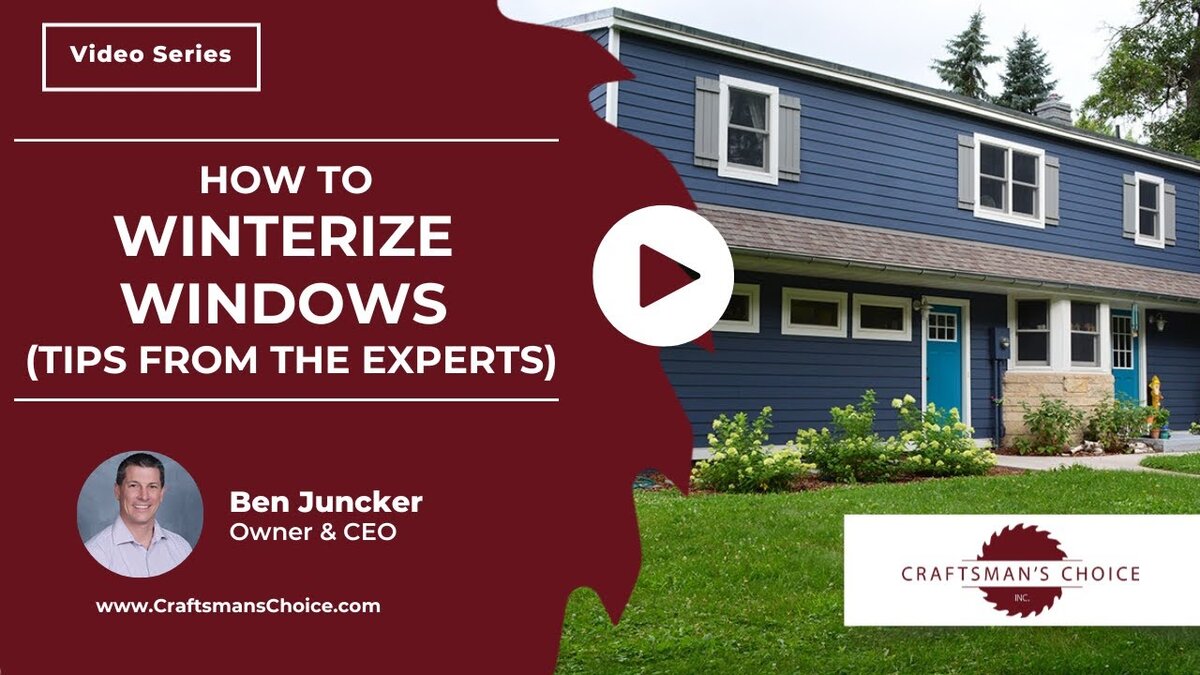Up to 30% of a home’s heat can escape through inefficient windows during winter. If full replacement isn’t possible this season, learning how to winterize windows can help reduce drafts, lower heating costs, and improve comfort until a long-term solution is in place.
Winterizing is a cost-effective way to seal gaps and insulate glass, keeping warm air in and cold air out. While it won’t match the performance of new energy-efficient models, these steps can make a noticeable difference through the colder months.
Why Winterizing Windows Matters
Your windows are one of the biggest culprits when it comes to heat loss in winter. Drafts, gaps, and thin glass can all let warm air escape while inviting cold air in. By taking steps to insulate and seal your windows, you can:
- Reduce heating costs
- Increase indoor comfort
- Minimize drafts and cold spots
- Protect your HVAC system from overwork
Even if window replacement is on the horizon, winterizing can help you bridge the gap until it fits into your budget.
How to Winterize Windows: Short-Term Solutions
While winterizing windows won’t offer the same efficiency as installing new, energy-efficient models, it can provide relief during the colder months. Here are some expert-approved methods:
1. Window Insulation Film
A quick and affordable option, window insulation film creates a barrier that helps retain heat indoors. These plastic shrink films can be applied directly to the glass and tightened with a hairdryer for a seamless fit. The film is nearly invisible and can make a noticeable difference in reducing drafts.
Pro Tip: Clean your windows thoroughly before applying the film to ensure it adheres properly.
2. Weatherstripping
Drafts often sneak through gaps where windows meet their frames. Weatherstripping is an easy fix that involves applying adhesive strips along the edges to block airflow. There are different types of weatherstripping, such as foam tape, V-seal, and felt, to suit your specific needs.
Focus Areas: Pay attention to areas where you feel drafts or see light coming through.
3. Caulking Gaps
For cracks or gaps between the window frame and the wall, caulking is a simple yet effective solution. Use an exterior-grade caulk to seal outside gaps and an interior-grade caulk for indoor fixes. This will help prevent cold air from sneaking in around the edges.
Expert Tip: Choose a flexible, paintable caulk that can expand and contract with temperature changes.
4. Thermal Curtains
Thermal curtains or insulated drapes provide an extra layer of protection against cold air. They are especially helpful for large windows or patio doors. Close the curtains at night to trap heat inside and open them during the day to let in natural sunlight.
5. Rope Caulk for Temporary Seals
Rope caulk is a pliable material that’s easy to press into cracks or crevices. It’s perfect for sealing temporary gaps, especially in older windows that may be harder to insulate.
Is It Time to Consider Replacing Windows?
While learning how to winterize windows can help in the short term, experts agree that it’s not a long-term solution. If your windows require significant effort to keep your home comfortable, it may be time to start planning for replacements.
Why Replacement Is Better:
- New windows offer superior insulation and energy efficiency.
- Modern designs minimize drafts and condensation.
- Energy-efficient windows can reduce heating and cooling costs year-round.
If budget constraints are an issue, consider replacing a few windows at a time. Start with the most problematic areas and gradually upgrade as finances allow. In the long run, investing in new windows will save you more money and effort than repeatedly winterizing old, inefficient ones.
Expert Recommendations for Cost-Effective Comfort
To maximize the benefits of winterizing your windows, combine multiple strategies for better insulation. For example, use window film and weatherstripping together to tackle both glass and frame issues. Keep in mind, though, that these methods are best for short-term relief and don’t provide the same durability or efficiency as modern window replacements.
By following these expert tips, you can improve your home’s comfort and energy efficiency without breaking the bank. Whether you’re preparing for a bitterly cold winter or just looking to cut heating costs, winterizing your windows is a practical step in the right direction. Contact us at Craftsman’s Choice today for help with window replacements or to discuss your energy-saving options!



















